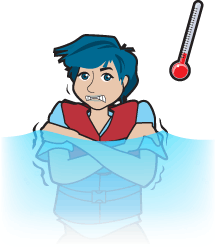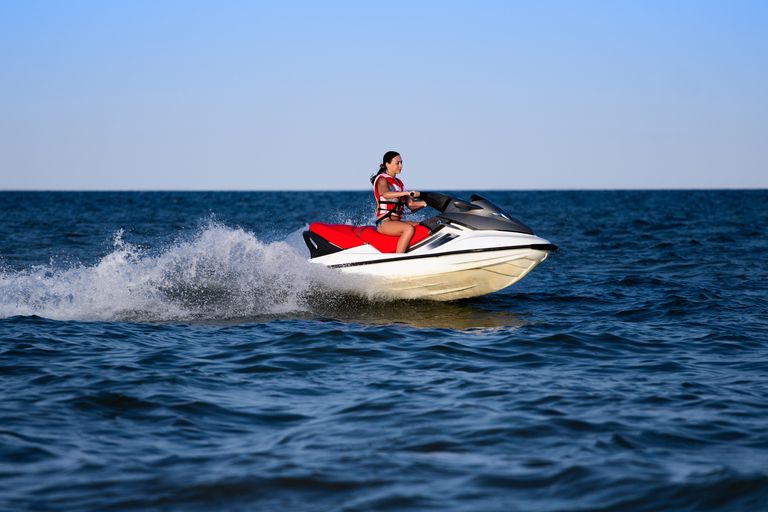How to Survive Cold Water Immersion

Even though it may be t-shirt weather and the air is warm, the water can still be very cold. Because most of us do not participate in cold water activities, we are unaware of how our bodies react in early and late-season conditions.
Sudden immersion in water under 60 degrees Fahrenheit could lead to death in less than a minute. So, if you're heading out on the water this winter or even doing some work around the shoreline, there are a few things that you should know about cold water immersion and hypothermia.
Keep reading, and have a safe boating season!
The Rise of Polar Plunges
With the recent popularity of cold water baths and therapy, more people are plunging their bodies into frigid waters with the idea that it has health benefits. Even Chris Hemsworth got into the practice during an episode of Limitless With Chris Hemsworth on Disney+.
So, if Thor regularly embraces cold water immersion, it must be a good idea, right?
Well, whether you intentionally embrace cold water practices or you find yourself unintentionally submerged in cold water while out on your boat, it's crucial to understand the signs of hypothermia and what to do if you begin suffering from being in low-temperature waters.
What Are the Stages of Cold Water Immersion?
What does cold water immersion look and feel like? You might not realize you're experiencing the negative effects of cold water if it doesn't "seem" that cold, but it's important to recognize the stages.

Initial Immersion: Cold Water Shock
If a person falls into cold water, their body's initial reaction is a 'gasp reflex,' which can include hyperventilation and muscle spasms.
This initial reaction can result in water inhalation and significant changes in heart rate and blood pressure. These effects last for the first two or three minutes of immersion.
Short-Term Immersion: Impaired Function
After only a few minutes in cold water, you may lose basic motor skills.
Between 3 and 30 minutes after immersion, a person's hands quickly lose strength and sensation and, subsequently, their ability to swim (even strong swimmers). In cold water immersion cases, boaters often drown as a result of swimming failure before hypothermia ever has the chance to set in.
Longer-Term Immersion: Immersion Hypothermia
Following 30 or more minutes of immersion, hypothermia – a drop in body temperature below the normal level – will begin to set in. Your body temperature will continue to drop until it reaches the same temperature as the water.
Hypothermia symptoms range from mild to severe. As the body's core temperature falls, a person will eventually lapse into unconsciousness.
Post-Rescue Collapse
A drop in blood pressure may lead a person to become unconscious or to stop breathing at the point of rescue or up to several hours afterward. It's important to monitor anyone rescued from cold water immersion for several hours (if not longer) after they're safe and warm on dry land.
What Should You Do to Survive Cold Water Immersion?
Now that you know a bit more about the stages of immersion in cold water and how it impacts your body, what can you do if you find yourself overboard and in low-temperature waters?
Here are a few things you can do to improve your chances of survival and recovery.
Keep Your Head Out of the Water
As with any situation in which you want to prevent drowning, it is important to keep your head out of the cold water. A large percentage of your body heat is lost through your head, so it is critical to keep it dry.
Get Out of the Water
If you fall into cold water, always try to remove yourself. If you have fallen from a boat, attempt to climb back on board.
Then, remember that cold temperatures significantly decrease your physical ability. However, swimming will be more difficult, and you will not be able to swim as far.
If you are a confident swimmer at a reasonable distance from shore and suspect that rescue may not be likely, you may attempt to swim. Just remember, you will not be able to swim as far in cold water.

Float in the H.E.L.P or Huddle Positions
You want to keep as much body heat as possible from escaping.
If you are alone, cross your arms tightly against the chest and bring your knees up close to the chest. Floating in the H.E.L.P. (Heat Escape Lessening Position) will significantly increase survival time.
Be sure you know how to do this position and practice it before getting on a boat in colder temperatures. This will help you automatically get into this position if you find yourself in the water.

However, if there are three or more people in the water with you, huddling in a group is the best option.
After Your Rescue
When rescued, be sure to replace wet clothing with dry and remain in a warm setting until you are confident that your core body temperature is back to normal.
The effects of cold water on your body can last, so be sure to see your doctor after you're safe and dry.
Survive Cold Water Immersion With Boater Safety Education
We've covered some important aspects of being aware of how cold water can impact your body and how to survive. However, the best way to improve your chances of survival (and prev
ent potential accidents that could
put you in the water) is to pass a boater safety course.
BOATERexam wants everyone to stay safe on the water and enjoy more fun days on a boat – no matter if it's chilly outside or warm! Our online state-approved and Canada-approved courses teach everything from the essential safety equipment you need on board to navigating the waters, preventing boat accidents, and what to do if something goes wrong.
Before you find yourself in a bad situation on the water, find your course in the U.S. or select the course for Canada, and get safety certified. Then, enjoy a safe boating season!
Originally published May 21, 2010. Content updated November 16, 2023.


